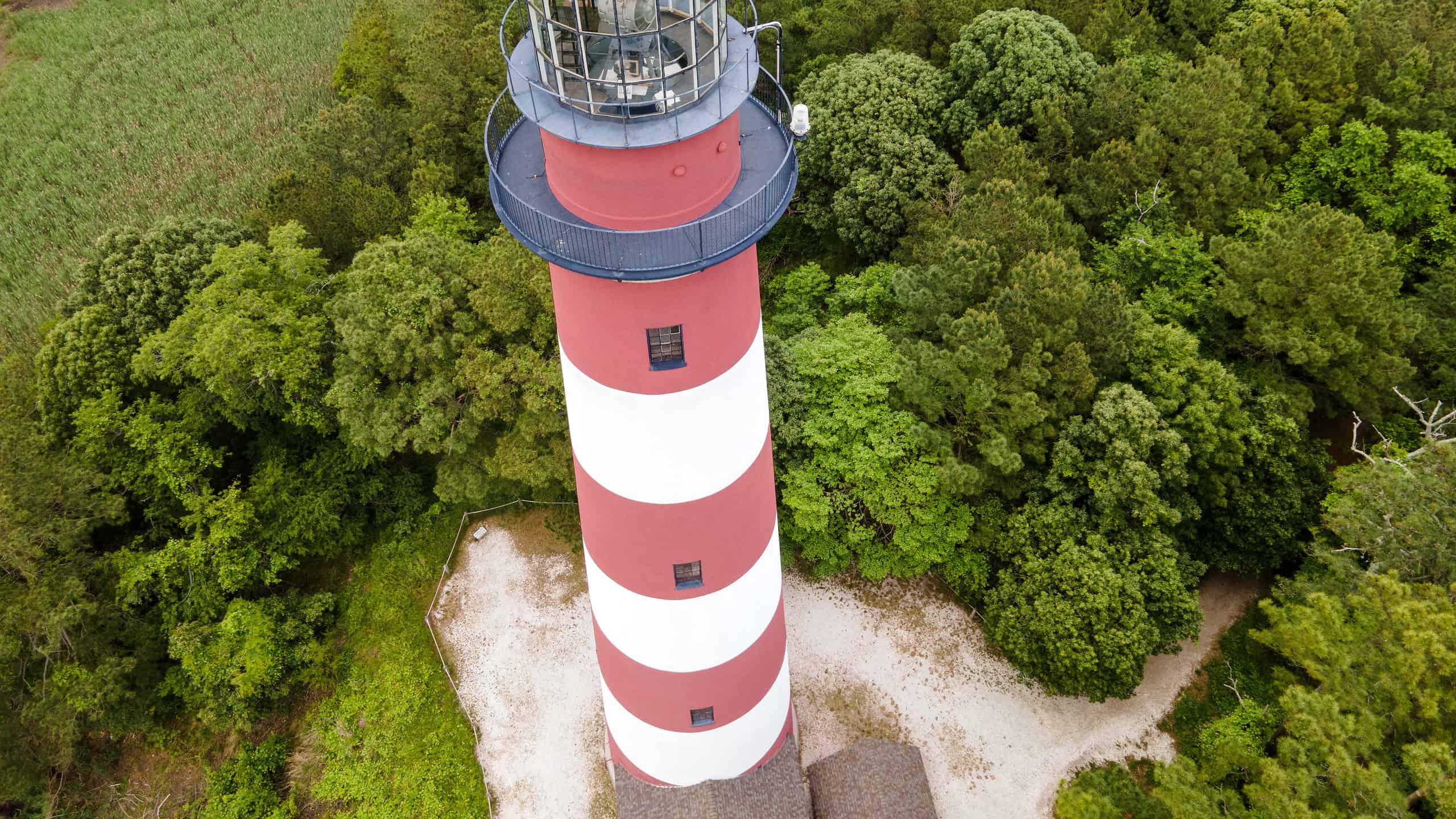
The 5 Most Beautiful Lighthouses in Virginia Beach
↓ Continue Reading To See This Amazing Video
Virginia Beach is a small city on the coast of the state of Virginia, right where the Atlantic Ocean and Chesapeake Bay converge. It is famous for its scenic boardwalk and beautiful shoreline, and for being the original landing point of the English settlers who established Jamestown. It is also home to some of the East Coast’s most beautiful lighthouses, some of which are among the oldest in the country. Read on to discover more about these historic structures if you are planning a visit to Virginia any time soon!

©iStock.com/Kyle Little
Cape Henry Lighthouse
Cape Henry lies at the intersection of the Atlantic Ocean and Chesapeake Bay, and it provides entry to ports in several nearby states including Maryland, Washington D.C., and the Virginian towns of Newport News and Norfolk. With such heavy maritime traffic, this area was in great need of a guiding light to deter the rampant piracy that occurred in Cape Henry and to help cargo ships in harrowing weather.
It was only after tobacco merchants joined the call for a lighthouse in 1758, after 70 years of raising the issue, that the local Lighthouse Board finally agreed. By 1772, funds had been acquired for the base materials and the construction teams living quarters, but the project soon lay forgotten as the Revolutionary War broke out between the colonies and Britain.
When construction began again on the Cape Henry Lighthouse, it became the first lighthouse build to be authorized by the freshly formed United States of America. The base of the tower was sourced from the same sandstone used in the construction of the U.S. Capitol, Mount Vernon, and the White House.
The State of Virginia quickly donated several acres of land to speed up the process, and in October of 1792, the Cape Henry Lighthouse was completed by Johh McComb Jr. and his team for a total of $17,700. It stood a full ninety feet tall and featured a first-order Fresnel lens that is still in operation today.
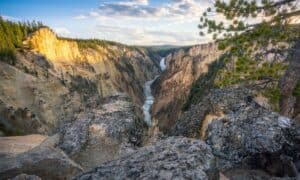
In 1861, Civil War broke out in America, and the Cape Henry Lighthouse was damaged during the fighting by the Confederacy. Union forces restored the lighthouse to its full working condition in 1863. By 1881, decades of continual use had worn down the tower again, and a second one-hundred-fifty-seven foot Cape Henry tower was authorized and built for $75,000 only three hundred and fifty feet away from the first.
Despite worry over its condition, the original Cape Henry Lighthouse is still standing today. Both towers are currently housed on the Fort Story Military Reservation, though only the first tower is open to the public. It is the fourth oldest lighthouse in America and a common tourist attraction for those visiting Virginia. In 1964 it was designated as a National Historic Landmark.
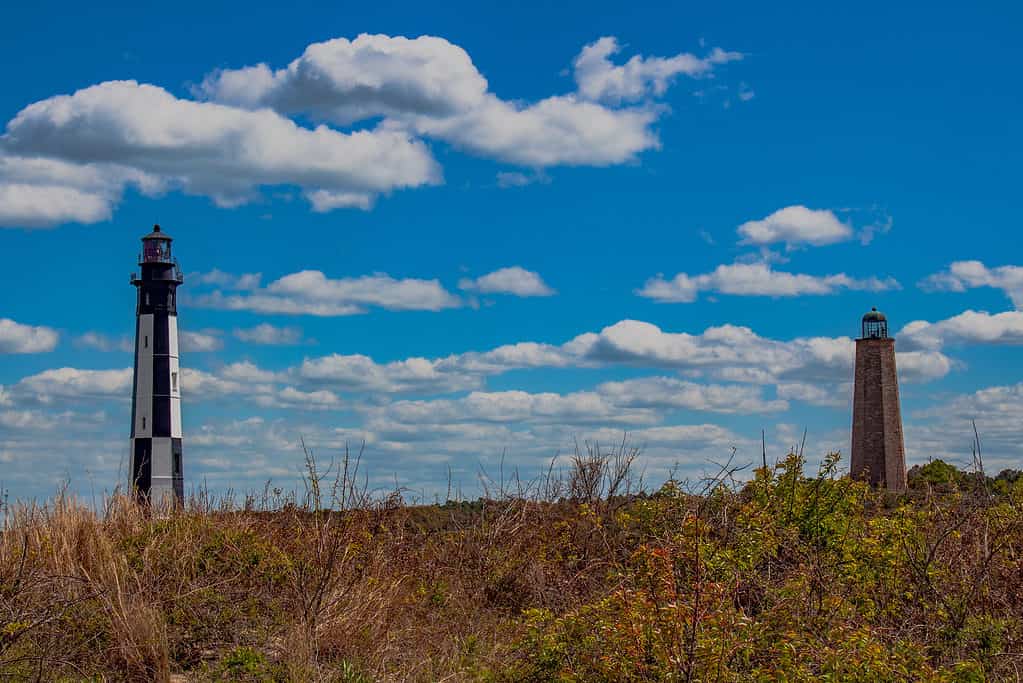
©iStock.com/Tim Pennington
Lightship Portsmouth
Lightships have played an important and interesting part in the history of the United States. They were built from April 1820 until March of 1985 and used as guiding lights where more traditional lighthouses and towers could not be safely built or maintained. During their heyday, there were one-hundred-seventy-nine lightships occupying posts across one-hundred-sixteen different locations in the Pacific and Atlantic Oceans, as well as the Great Lakes.
The Lightship Portsmouth, also known as LV 101 (or Charles, after Cape Charles, Virginia) was originally built in 1915, and ready for duty by January 12th of the following year. Construction was carried out by Pusey and Jones, an industrial equipment company based in Wilmington, Delaware that had been building ships since 1853.
It cost $108,507 to build the 102 feet long ship, complete with a rounded hull made entirely of steel. This hull design, referred to as a “whaleback”, was unique for its time, and it helped keep the ship stable during rough weather. The mast of LV 101 was also hollowed out, which enabled the crew to access and operate the light tower via an internal ladder system no matter how intense outside conditions became.
The Lightship Portsmouth was run by an eleven-man crew comprised of four officers and seven members of the United States Lighthouse Service, a proto-Coast Guard agency. The initial docking port was in Cape Charles Virginia from 1916 til 1924, during which the ship received radio technology and acetylene lamp illuminants. From 1926 until 1951, the Lightship Portsmouth was stationed in Overfalls Shoal, Delaware.
By 1964, after two World Wars and forty-eight years of service, LV 101 was decommissioned, and assigned to her final resting place in Portsmouth, Virginia. Over the course of three years, the ship was restored by volunteers where necessity demanded it, and it was transformed into its current incarnation as a tourist attraction and maritime museum. In 1967 the Lightship Portsmouth officially opened to the public in the Portsmouth Naval Shipyard Museum, and it was added to the list of National Historic Landmarks in 1989.
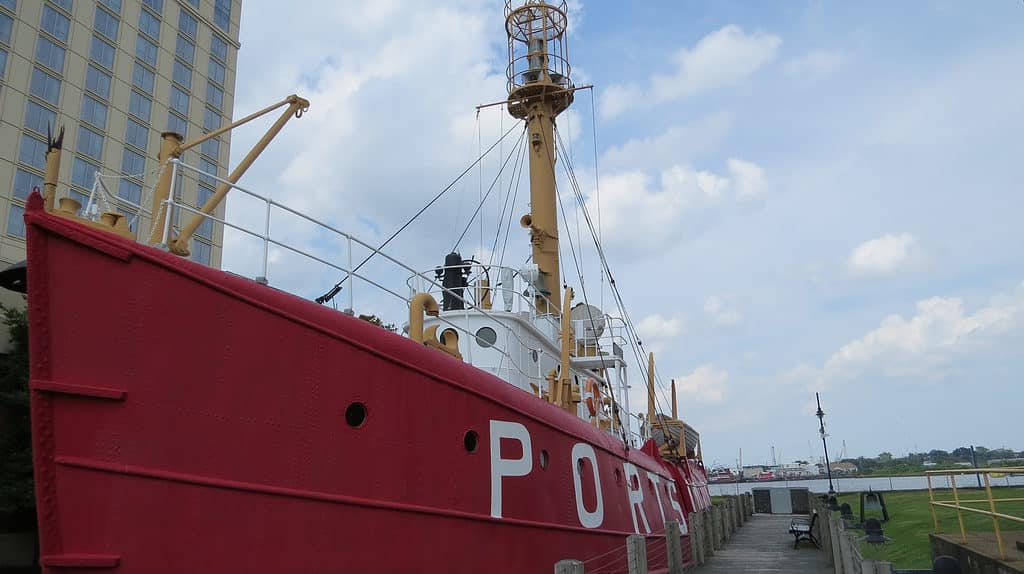
Assateague Lighthouse
The Assateague Lighthouse was built on Assateague Island, a nearly 40-mile-long barrier island that is split between Virginia to the south and Maryland to the north. In March of 1831, after decades of shipwrecks had accumulated in the area, United States Congress finally agreed to provide $75,000 for the construction of a lighthouse.
The fifty acres designated for its construction were purchased for $440 the following year. Noah Porter (who also built the Ocracoke Island Lighthouse) began the task of constructing the forty-five-foot tower and accompanying lighthouse keepers’ quarters in 1832 and by the spring of 1833, the work was finished.
As early as 1850, however, the Assateague Lighthouse was already in need of repair. In 1856 a third-order Fresnel lens was installed, but the tower was decommissioned two years later in favor of building a new one. On June 20th of 1860, the United States Congress provided $50,000 to build a second lighthouse, but the work was forestalled when Civil War broke out in America the following year.
As a result, the first Assateague Lighthouse was used throughout the fighting, and the construction of the newer tower didn’t begin in earnest until the war was over in 1865. By that time the cost had increased dramatically, and Congress appropriated an additional $25,000 in July of 1866. By October 1st, 1867 the second Assateague Lighthouse was finished (along with a keeper’s quarters) standing one-hundred-forty feet tall and equipped with a first-order Fresnel lens that projected out nineteen miles over the water.
In 1933 the lighthouse received electricity, and in 1961 the Fresnel lens was retired and in its place, the Assateague Lighthouse runs a DCB (directional coded beacon). The renovated lighthouse keeper’s quarters are big enough to fit three separate keepers and their families, and the premises are located amidst the Chincoteague National Wildlife Refuge, making the Assateague Lighthouse a perfect spot to visit if you find yourself in Virginia Beach.
The tower still guides ships today, and in 2004 the United States Coast Guard relinquished control to the United States Fish and Wildlife Service. The Assateague Lighthouse is available for free to the public every weekend from April to November from 9 am to 3 pm, and is highly recommended for its serene location and panoramic views from the top of the tower.

©christianthiel.net/Shutterstock.com
Cape Charles Lighthouse
The Cape Charles Lighthouse is both the tallest tower in the state of Virginia and the second-tallest tower in the country, after the Cape Hatteras Lighthouse. It was built on the north side of the Chesapeake Bay, just across the water from the Cape Henry Lighthouse. In 1826 the United States Congress approved $10,000 for the construction of the lighthouse, and it was completed a year later in 1827, standing fifty-five feet tall.
The cape of Smith Island was notoriously prone to erosion, and by August of 1856, Congress found it necessary to provide an additional $35,000 in order to build a second Cape Charles Lighthouse further in from the first one. Unfortunately, their timing could not have been worse, as the American Civil War was just about to erupt, further delaying the completion of the second tower until September of 1864.
United States Congress again had to appropriate money to help finish the Cape Charles Lighthouse, this time administering another $20,000 and providing troops to help guard the premises while it was being completed during a war. This new tower stood one-hundred-fifty feet tall and only operated for another 28 years before the ever-shifting beachfront of Smith Island again demanded intervention.
Every year, thirty feet of shoreline was swallowed by the sea, and by 1883 the Lighthouse Board began to consider their next plan of action. A jetty was constructed for $10,000, again given by Congress, to halt the approach of the sea but by 1888 the walls of this protective structure were being worn down before it could be finished.
The following year the plan was changed, and United States Congress appropriated $150,000 to create a third station at Cape Charles. New jetties still had to be built to allow for the construction of the tower, and by July of 1892, all of the pre-emptive work (including the purchasing of land) was finally complete.
The third and final Cape Charles Lighthouse was constructed over a three-year period for a total cost of $78,200 and with the installation of its first-order Fresnel lens the tower was up and operating by August of 1895.
The Cape Charles Lighthouse was given electricity in 1933, and the Fresnel lens was replaced with a DCB when it was automated in 1963. Standing a full one-hundred-ninety-one feet tall, it is currently operated by the Coast Guard and while the inside is not accessible to the public, the curious can brave the trip to Smith Island to witness this beautiful lighthouse for themselves.
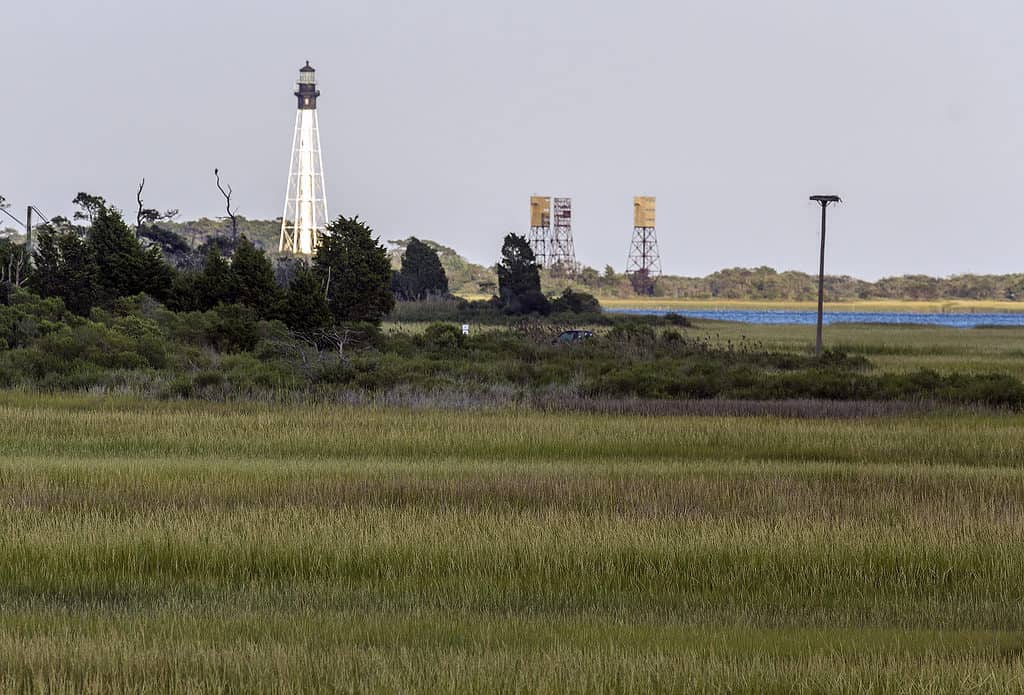
New Point Comfort Lighthouse
The sixty-three feet tall New Point Comfort Lighthouse is the third-oldest lighthouse on the Chesapeake Bay, and the tenth-oldest in America. It sits at the confluence of the York River and Mobjack Bay, where it was built in 1805 by its very first keeper, Elzy Burroughs, after being commissioned by President Thomas Jefferson a few years prior.
The transport of goods across Chesapeake Bay and its tributaries was a massive part of the United States’ early economic growth, and the importance of a lighthouse at such a location was not lost on the newly formed government. The New Point Comfort Lighthouse, like the Cape Henry Lighthouse, was built from the same quarry of sandstone that also contributed to the Capitol building and the White House.
Officially operating on January 17th of 1805, the lighthouse continued to help guide passing trade vessels until the War of 1812 when the British Royal Navy destroyed both the tower and the keeper’s quarters. Both structures were eventually reformed in 1855, and ten years after that the tower was upgraded with a brand new fourth-order Fresnel lens that allowed its beam to travel 13 miles over the waters of the Bay.
The New Point Comfort Lighthouse is also unique in having one of the only known African-American lighthouse keepers, a preacher by the name of James McHenry Farley who took care of the premises from 1871 til 1873. In the early 1920s, the lighthouse was automated and by 1960 it was running off of electricity until 1963, when it was retired from official use.
It was officially recognized as a National Historic Landmark in 1972, and three years later Mathews County bought the lighthouse and began repairing the premises with the help of local volunteers and the Virginia Department of Conservation and Natural Resources. Today you can visit the lighthouse via boat, as it cannot be accessed by car or on foot.
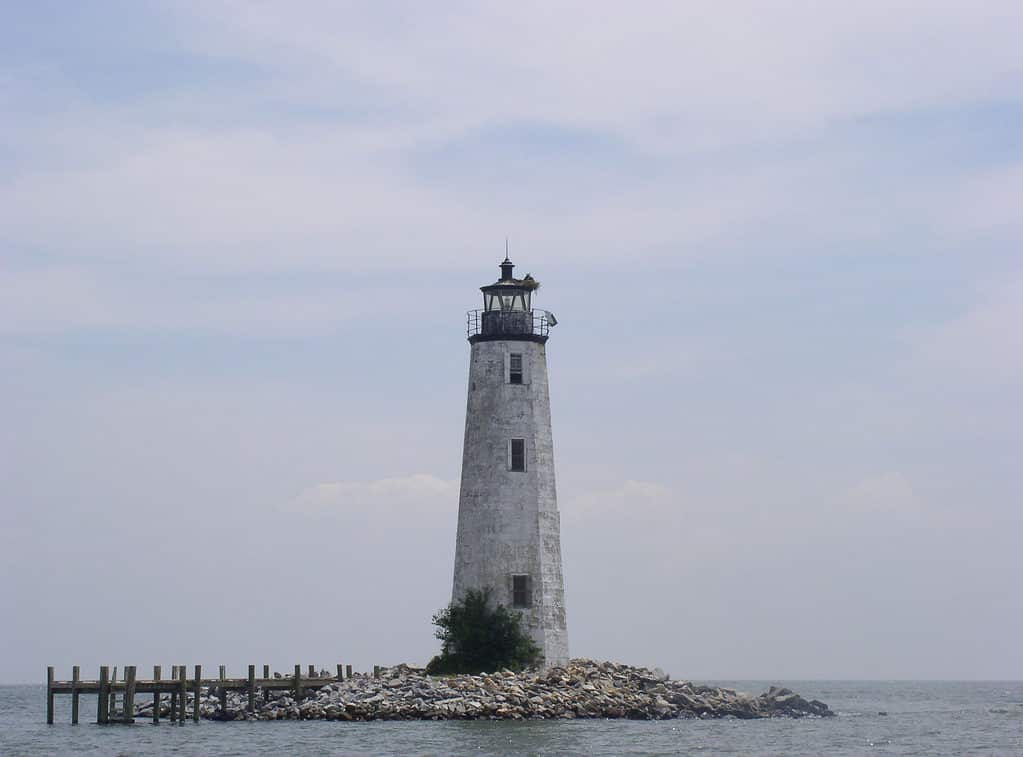
©Rachel Ramey/Shutterstock.com
Up Next





